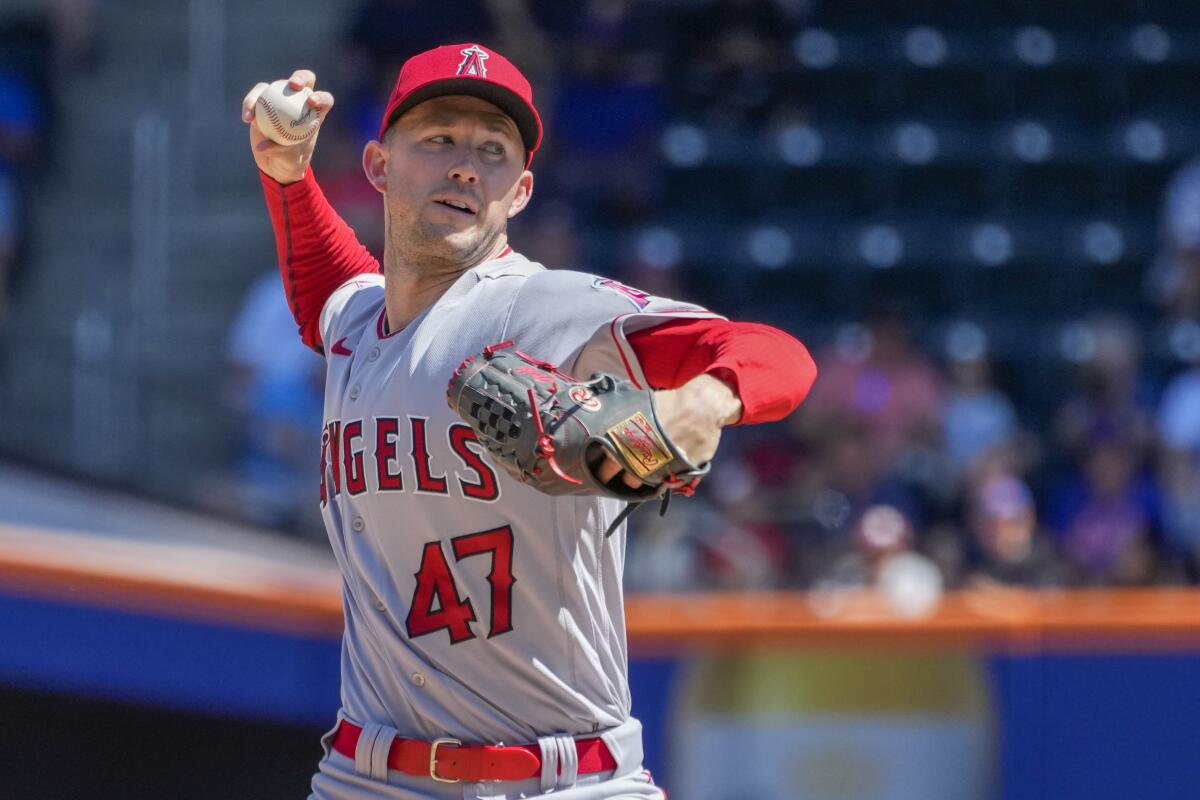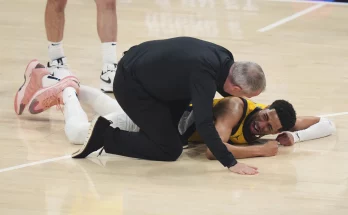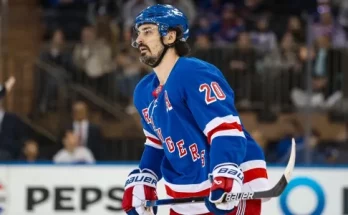In a stunning turn of events that shook up the National League hierarchy, the New York Mets dominated the Los Angeles Dodgers in a decisive victory marked not just by offensive prowess but by a truly remarkable performance from an unlikely hero: Griffin Canning. While Mets fans were reveling in a lopsided win against one of MLB’s juggernauts, Canning’s standout contribution on the mound was one of the most intriguing and surprising storylines to emerge from the game.
Although the Dodgers entered the game favored to win—boasting a stacked lineup including superstars Mookie Betts, Shohei Ohtani, and Freddie Freeman—it was the Mets who took complete control. The final score wasn’t just a win; it was a statement. But even more notable was that this statement was signed in bold by Griffin Canning, a pitcher not on many people’s radar before this game.
A Surprise Assignment
Canning, who was acquired in a recent trade that raised more eyebrows than expectations, had not been seen as a key rotation piece for the Mets. Having spent the early part of the season either in the bullpen or making spot starts, Canning’s track record was relatively modest. Before the game, Mets manager Carlos Mendoza had announced that due to a short rest period for his usual rotation, Canning would get the nod against the Dodgers.
“He’s got good stuff,” Mendoza said pregame. “He just needs to trust it. If he goes out there and pounds the zone, we believe he can keep us in this one.”
What Mendoza got instead was far beyond merely “keeping them in it.”
Dominating From the First Pitch
From his very first pitch, Griffin Canning set the tone. Facing the top of the Dodgers order, he attacked with purpose and precision. His fastball sat at 94-96 mph, but it was the command of his secondary pitches that truly disrupted one of the league’s most dangerous lineups.
He struck out Mookie Betts looking with a backdoor slider in the first inning, then induced a weak groundout from Ohtani on a first-pitch changeup. Freeman managed a sharp liner, but Mets third baseman Brett Baty made a diving stop to end the frame.
Canning’s confidence only grew from there. By the end of the third inning, he had already racked up five strikeouts, each coming on a different pitch—demonstrating a deep, mature arsenal.
“It was one of those nights where everything was working,” Canning said postgame. “The slider felt great out of my hand, and the changeup was getting swings. When you’ve got that kind of rhythm going, it’s just about staying locked in.”
Unlikely Hero Shuts Down Dodgers’ Offense
In six scoreless innings, Canning allowed just three hits, walked one batter, and struck out nine. Most impressively, he held the Dodgers 3-4-5 hitters—Freeman, Smith, and Muncy—to a combined 1-for-8 with four strikeouts.
Pitching to contact when needed and dialing up swing-and-miss stuff with two strikes, Canning maneuvered through the Dodgers’ lineup with the poise of an ace. After he struck out Chris Taylor to end the sixth inning, he walked off the mound to a standing ovation from the Citi Field crowd—many of whom had likely never expected such a performance from the right-hander.
“You’ve got to tip your cap to the guy,” said Dodgers manager Dave Roberts. “He had a plan, executed it well, and just flat-out beat us tonight. We didn’t have many answers.”
An Explosive Mets Offense
While Canning was stealing the show on the mound, the Mets’ bats gave him more than enough support. New York tagged Dodgers starter Gavin Stone for six runs in just four innings. Brandon Nimmo got things started with a leadoff home run in the first inning, and Francisco Lindor followed up with a two-run triple in the second. Pete Alonso added a mammoth two-run homer in the third—his 18th of the season.
But it wasn’t just the long ball. The Mets worked deep into counts, chased Stone early, and feasted on the Dodgers’ bullpen. By the end of the seventh inning, the Mets led 10–0, with every starting position player recording at least one hit.
“We played our brand of baseball tonight,” said Lindor. “Aggressive, focused, and relentless. And having Griffin doing his thing on the mound just energized us even more.”
Redemption and Reinvention for Canning
Canning’s performance was more than just a statistical gem—it marked a possible turning point in his career. Drafted in the second round by the Los Angeles Angels in 2017, he was once considered a potential frontline starter. But injuries and inconsistency marred his time in Anaheim. His ERA hovered around 4.80 over four seasons, and in 2023, he bounced between the rotation and bullpen, never fully finding his footing.
When the Mets acquired him in an under-the-radar deal involving minor league assets, it was seen more as a depth move than a rotation solution. But after this performance, fans and analysts alike are reevaluating what Canning can bring to this team.
“He’s not just filling in,” said Mets pitching coach Jeremy Hefner. “He’s competing. He’s evolving. He’s trusting his stuff again, and you can see the difference in the results.”
Advanced Metrics Support the Eye Test
Beyond the box score, the advanced metrics from Canning’s start are particularly telling. According to Statcast:
- Whiff rate: 39.2% (well above league average)
- First-pitch strike rate: 78%
- Spin rate on curveball: +200 RPM from his season average
- Hard-hit percentage allowed: 22% (Dodgers’ average is 45%)
In short, this wasn’t a fluke. Canning was locating his pitches, generating soft contact, and overpowering elite hitters when necessary. His slider, which had lacked bite earlier in the year, was consistently finishing below the barrel. The changeup neutralized left-handed hitters. And most importantly, he looked like he belonged on the big stage.
Building Toward a Bigger Role?
With the Mets still seeking consistency in the back end of their rotation, Canning may have just earned himself a much larger role. Veteran starters like José Quintana and Tylor Megill have struggled at times, while rookies are still being eased into big-league action. If Canning can build off this outing, he could be the missing piece to stabilize a playoff-contending rotation.
“He’s got the tools,” said catcher Francisco Álvarez. “We saw it in the bullpen before the game—his stuff was moving differently tonight. If he can keep that rhythm, he’s going to help us win a lot of games.”
The question now shifts from “Can Griffin Canning give us innings?” to “How many more starts can we give him?”
Dodgers Searching for Answers
As for the Dodgers, this was an off-night in a season that has already had its share of turbulence. Ohtani has been spectacular, and Freeman and Betts remain dangerous, but the Dodgers have had stretches where they’ve looked surprisingly human—especially against teams they’re expected to beat.
“We’re going to put this one behind us,” Betts said after the loss. “We’ve got a long season ahead, but no excuses. They beat us every way tonight.”
The Dodgers’ offense, which entered the game leading the league in slugging percentage, looked flustered and flat. Their pitching, particularly the bullpen, continues to be a question mark. If the Mets—without their top two starters available—can hang 11 runs and shut out L.A., what will teams like the Braves or Phillies do in October?
A Night to Remember
For Griffin Canning, this night will stand as a reminder of what he is capable of when everything clicks. For the Mets, it was a galvanizing victory that may mark the beginning of a pivotal stretch in their season. And for the Dodgers, it was a humbling loss and a cue to regroup.
“Games like this can change careers,” Mets broadcaster Keith Hernandez remarked on the postgame show. “Canning didn’t just keep us in the game. He owned it. And he did it against one of the best lineups in baseball.”
The road is long, and consistency will ultimately define how this performance is remembered. But for one night, under the bright lights of Citi Field, Griffin Canning reminded the baseball world that every underdog has its day—and sometimes, it’s spectacular.



